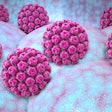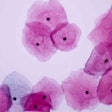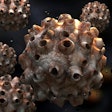
Researchers have found that mailing human papillomavirus (HPV) self-sampling kits to women overdue for cervical cancer screening was cost-effective for increased screening uptake relative to usual care.
The study, published Wednesday in JAMA Network Open, supports mailing HPV kits as an efficient outreach strategy for increasing screening rates among eligible women.
Cervical screening is associated with substantial global reductions in cervical cancer incidence and mortality. Such screenings are primarily done through Papanicolaou, or Pap tests, named after the doctor who determined their use in early detection. Most cervical cancers are preventable by addressing precancers caused by high-risk HPV, thus they occur predominantly in individuals who never or rarely receive screening.
Recent advances allow for HPV-only screening, which is more sensitive than a Pap test alone for detecting precancerous cervical lesions. Home-based HPV-only screening is feasible because, unlike Pap tests, either clinicians or individuals can collect vaginal HPV samples.
Mailed HPV self-sampling kits have been reported to increase screening rates, likely by addressing some barriers to cervical cancer screening. However, their cost-effectiveness has not previously been evaluated in the U.S. The researchers sought to conduct an economic evaluation of mailing HPV self-sampling kits to under-screened women enrolled in an integrated U.S. health care system.
They performed a cost-effectiveness analysis of results from a randomized clinical trial of 19,851 women, aged 30 to 64 years, enrolled in a Kaiser Permanente Washington health plan. Their mean age was 50.1 years, and 76.7% were white. Eligible participants, identified through electronic medical records, had been enrolled in a health plan for at least three years and five months, had not received a Pap test during that time period, had a primary care clinician, and had had no hysterectomies. Of the 19,851 participants, 9,960 were randomized to the intervention group, and 9,891 to the control group. Control group participants received the usual patient reminders and screening outreach. Participants in the intervention group received the usual care, plus a mailed HPV self-sampling kit. Enrollment occurred from February 25, 2014, to August 29, 2016, with follow-up through February 25, 2018.
The economic evaluation was conducted between August 2, 2021, and July 30, 2022. Intervention delivery costs were based on either wellness visit costs or Pap test-only visit costs. The primary economic outcome was the incremental cost-effectiveness ratio for increased screening rates, defined as the incremental difference in cost (intervention group minus control group) divided by the difference in the number of participants completing screening (intervention group minus control group).
The researchers found that incremental cost-effectiveness ratios for increased screening uptake ranged from $86 to $146 per additional completed screening. Screening rates increased among under-screened women receiving mailed HPV kits compared with those receiving the usual care.
“These results support mailing HPV kits as an efficient outreach strategy for increasing screening rates among eligible women in U.S. health care systems,” wrote the researchers in a statement.


















